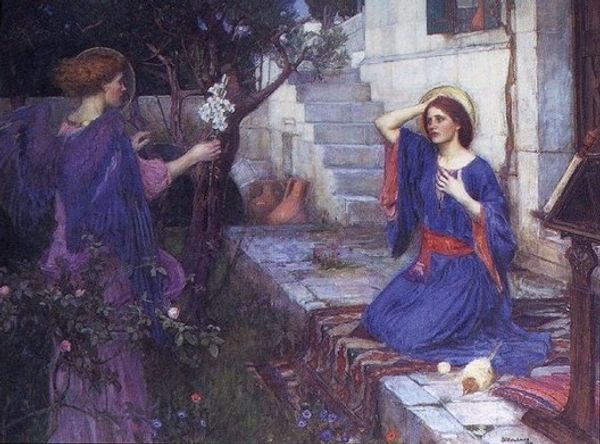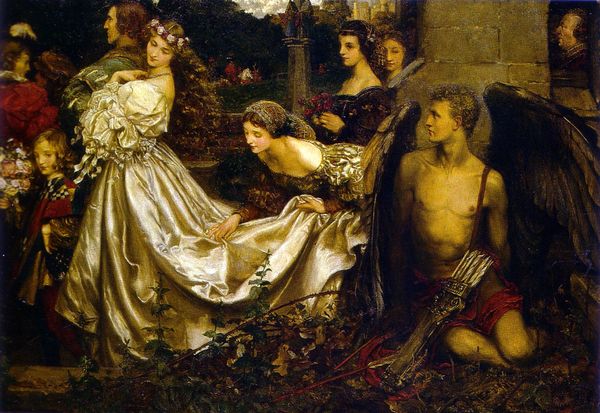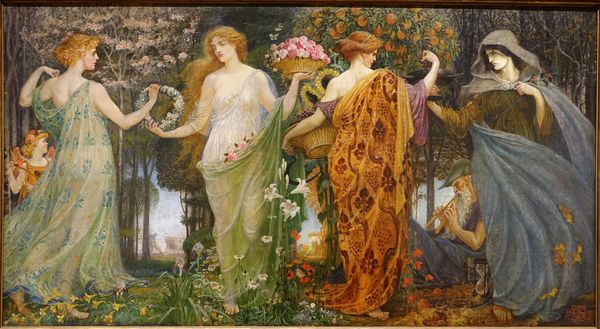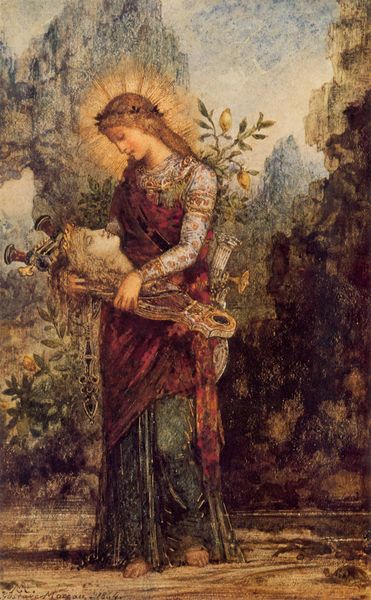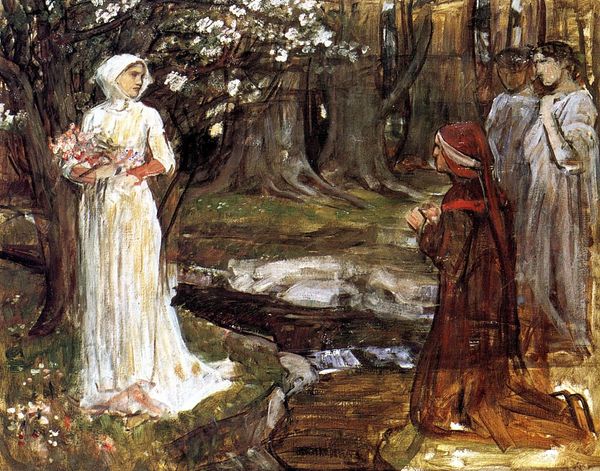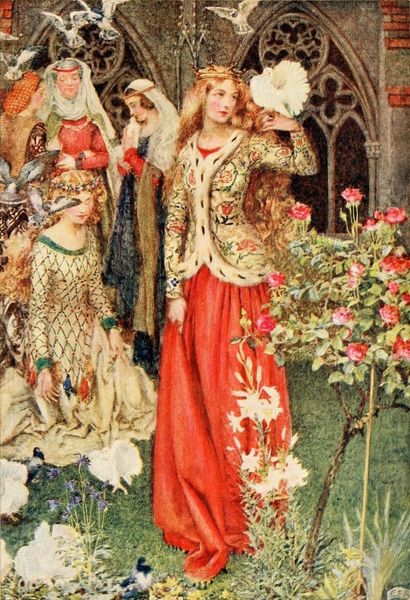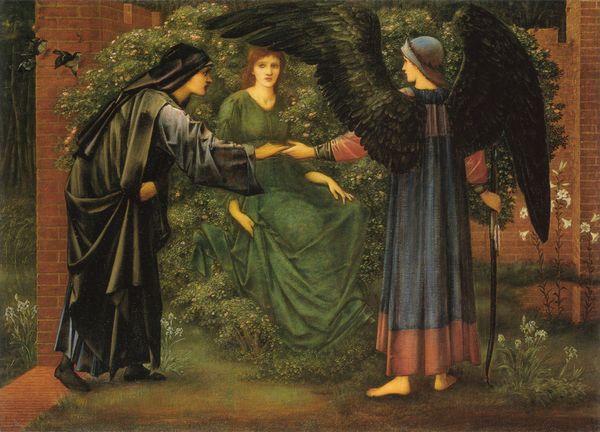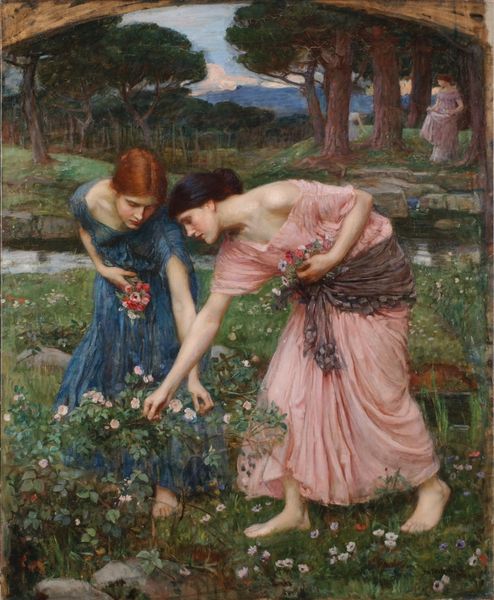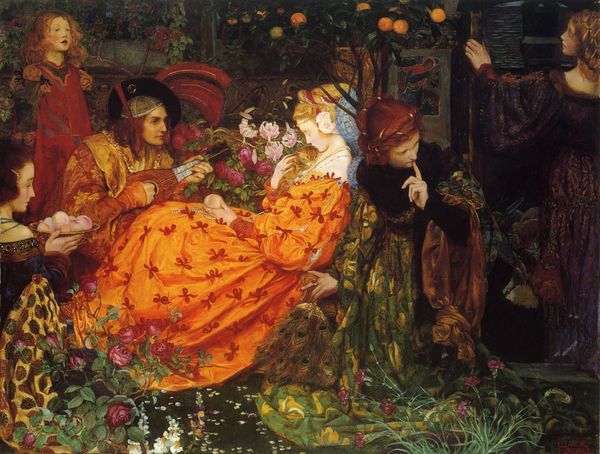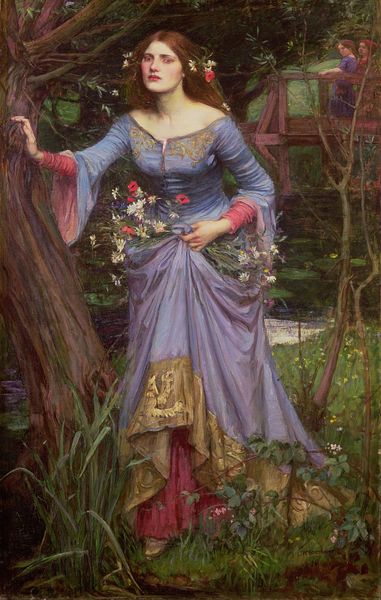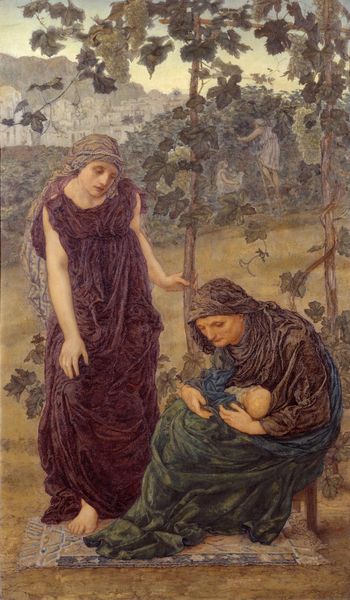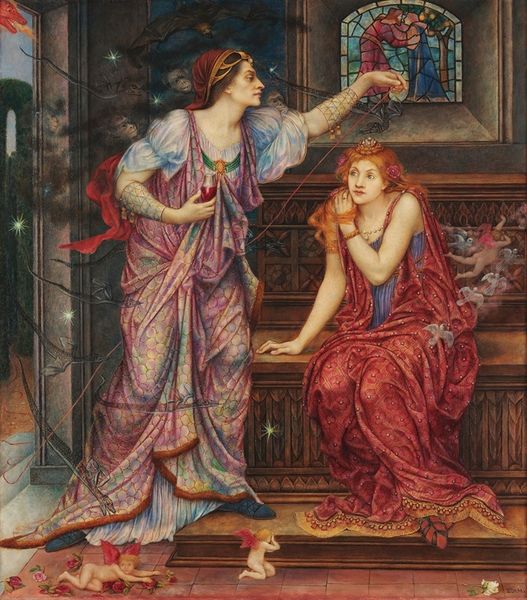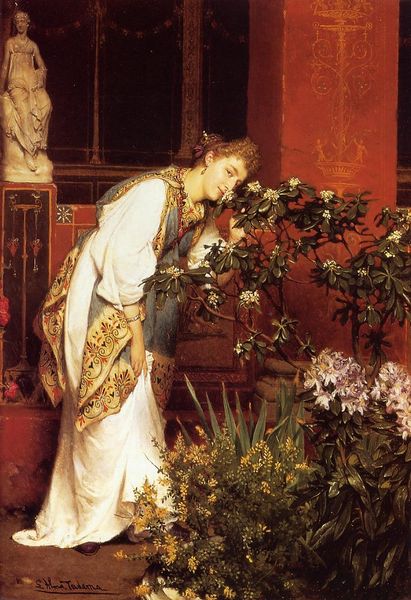
Dimensions: 115.57 x 160.02 cm
Copyright: Public domain
Curator: I find myself captivated by the light. There’s a beautiful softening, particularly in the faces of the women in the composition. Editor: That softening definitely lends itself to a romantic, even escapist quality, which is a signature element in the works of John William Waterhouse. This painting, entitled "The Enchanted Garden," completed in 1917, offers a window into his pre-Raphaelite inspired world, but let’s unpack those visual cues. What do you notice in the arrangement? Curator: The positioning of figures, their relationships implied by glance and gesture—the scene is obviously staged, almost theatrical. The eye is led diagonally from the cloaked figure at the left, through the cluster of women, and concludes with the male figure at the fountain. Waterhouse organizes them using subtle tonal shifts, from the dark reds on the periphery towards paler colors in the middle ground. Editor: I appreciate that reading. Waterhouse, during this period, like many artists, sought to grapple with representations of femininity. There's a complexity to this group of women—they appear as archetypes perhaps: maiden, mother, temptress? How might their attire, gestures, the garden itself, convey notions of women within societal structures of the time? Curator: The garden setting is pivotal here. Gardens in art are frequently depicted as sites of either sanctuary or danger, most often coded with notions of forbidden knowledge or lost innocence. The women are positioned as both inhabitants and products of this carefully curated, cultivated space. They are both bound and defined by the constraints of the space, perhaps embodying ideals and expectations placed upon them by the male gaze that certainly dominated painting traditions throughout art history. Editor: The composition offers a subtle tension; their idealized beauty contrasts with the looming war and societal shifts. Waterhouse’s use of classical elements, combined with an emerging Symbolist sensibility, reveals an artist aware of tradition yet striving to articulate modernity. Curator: It leaves me pondering the role of escapism during times of conflict—Waterhouse seems to construct this imagined world to either distract or perhaps provide solace during a difficult moment in world history. I wonder if this piece challenges, reinforces, or maybe attempts to re-write societal constructs of its time. Editor: Ultimately, this particular piece sparks more questions than answers for me, revealing that within what might seem like a straightforward pastoral scene lies complex dialogues of culture and construction.
Comments
No comments
Be the first to comment and join the conversation on the ultimate creative platform.
